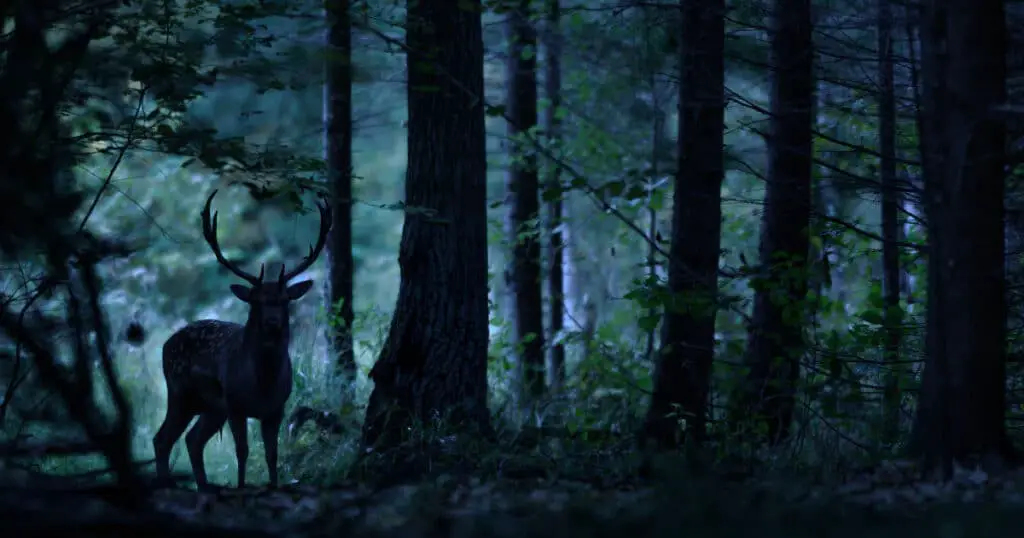If you’ve seen deer active at night, it’s a reasonable assumption that deer prefer to move and graze at night, but are deer nocturnal?
But in fact, most species of deer are usually crepuscular, meaning they’re active during twilight, rather than specifically nocturnal.
This is why most vehicle crashes with deer are very common during the twilight hours of the day and evening.
Always exercise extra caution if you drive where there is any chance of deer (such as rural and some suburban areas), especially if you do so during the evening or nighttime hours when they are most active.
When Deer are Most Active
Table of Contents
ToggleThe twilight hours occur just prior to the sun going down in the evening, and just after the sun comes up over the horizon (but cannot yet be seen) very early in the morning.
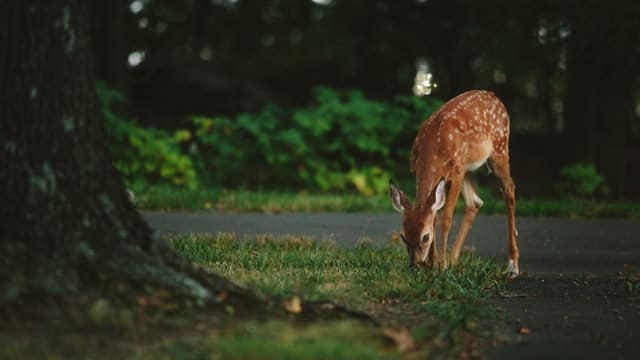
While not true of every species of deer, most deer are believed to be primarily crepuscular.
Deer are quite flexible in their sleeping and activity patterns. They can shift to more diurnal activity and even nocturnal activity, as well.
Deer will change their sleeping and activity patterns based on factors such as weather (seasonal and daily) and human activity.
The species of the deer also plays a significant part here. Many deer will try to be most active when predators are least active, including moving during the rain (so the sound disguises the sound of their movements).
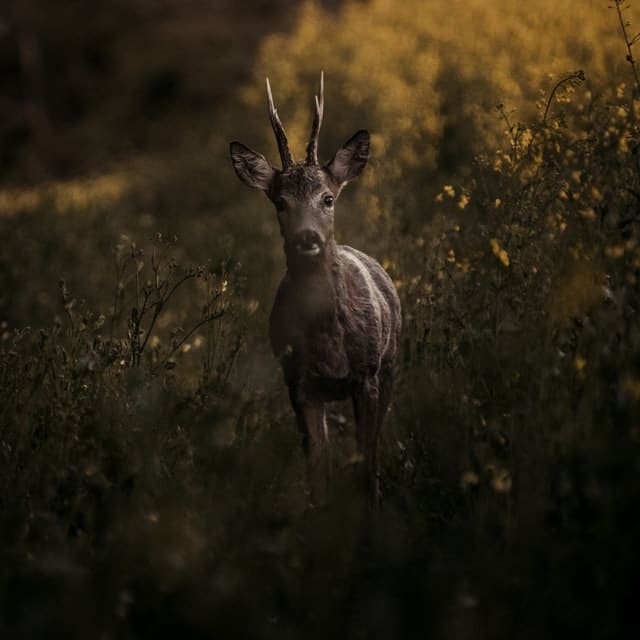
Are Whitetail Deer Nocturnal?
White Tailed Deer (also referred to as white-tail or whitetailed deer) are the most frequently hunted large game in the United States.
They are also the smallest deer found in North America.
If you’re wondering whether White Tailed Deer are nocutrnal, the answer is no. Whitetail deer is mainly crepuscular and browse for food primarily at dusk and dawn.
How to Avoid Hitting White Tailed Deer at Twilight
While whitetail deer have relatively good hearing and eyesight, specific features of their hearing and seeing abilities differ from those of humans.
Keep this in mind when you’re driving a vehicle, especially in the dusk and dawn hours.
Whitetail deer prefer the twilight hours because dawn and dusk often have milder temperatures than other hours of the day and night. This is especially true in regions that have harsher climates.
As whitetail (and many other deer) tend to be crepuscular, they’re most active at times of the day and evening when it’s more difficult for humans to see. It’s recommended to take measures to improve your visibility when driving during these times.
For instance, make sure your windshield and headlights are completely clean. That way visibility will be good and the road will be adequately illuminated.
Changes in Behavior Patterns
As someone who has seen whitetail deer at night, you may be confused by the fact that they are not nocturnal.
However, remember that deer’s sleep and activity patterns are affected by other conditions, including human behavior and predator movement where they live.
Deer can be somewhat active during the day, or even in full dark, making it easy to assume deer are nocturnal if that’s when you see them.
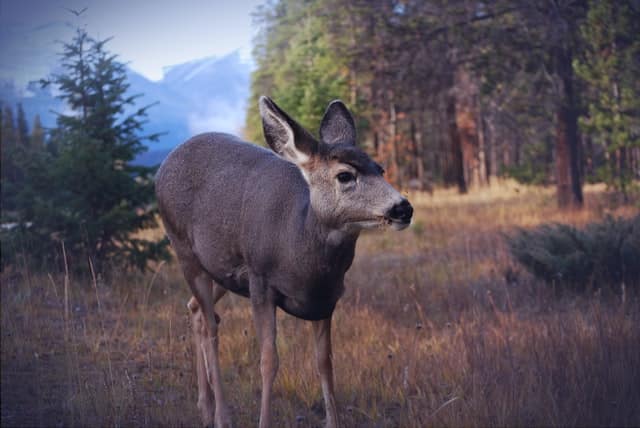
Usually, other factors cause this. For example, the deer may have detected the scent of a predator nearby and feel the need to move.
Also, deer are occasionally compelled to sleep in a specific place for the entire night (or day) in order to avoid danger.
In these circumstances, deer may need to do more foraging for food during the evening or at night in order to have all the time they need to get the nutrition they require.
Seasonal Behavior of Whitetail Deer
Whitetail deer behavior tends to be quite predictable and depends on the specific time of year.
For example, it’s easiest to predict what deer will do in the period immediately before the rut. Prior to this time, bucks have lived in groups of other bachelors for the summer weather.
When the pre-rut arrives, the bucks depart from their bachelor groups and seek to find home ranges of their own. Both male and female deer are looking for protein sources in their diets. This is crucial if they are to successfully survive the cold of winter.
During the pre-rut period, the bucks aren’t yet completely preoccupied with wanting to breed.
This means that does aren’t always being distracted by bothersome suitors.
All deer are spending the vast majority of their time getting as many calories as they can, collecting fat on their bodies to withstand the upcoming cold weather.
Do Deer Eat at Night?
Like other deer, whitetail deer are herbivores and primarily eat plants. The time of day they eat varies depending upon a number of factors, but they tend to eat during the early morning hours and evenings.
If given the choice, they won’t eat primarily at night since they are not nocturnal.
Deer browse and look for food in feedings area trails. In the fall, they eat foods such as nuts, corn, and acorns. This diet helps fatten them up for the winter. Deer are ruminants. This means that their stomachs have four chambers. This is essential for them to digest their food.
During the spring and summer, a deer’s diet focuses mainly on greenery. This is one of the reasons why they are so enticed by the wider variety of higher-calorie foods in the fall. They also have a larger appetite in the fall, from their instinct to put on weight for the winter.
At this time of year, deer may continue to graze and forage for food after twilight and during the night.
So, Are Deer Nocturnal or Not?
You may see deer moving or grazing at night, but most deer are not nocturnal. They are crepuscular, meaning they are most active at twilight in the early mornings or early evening before sunrise and after sunset.
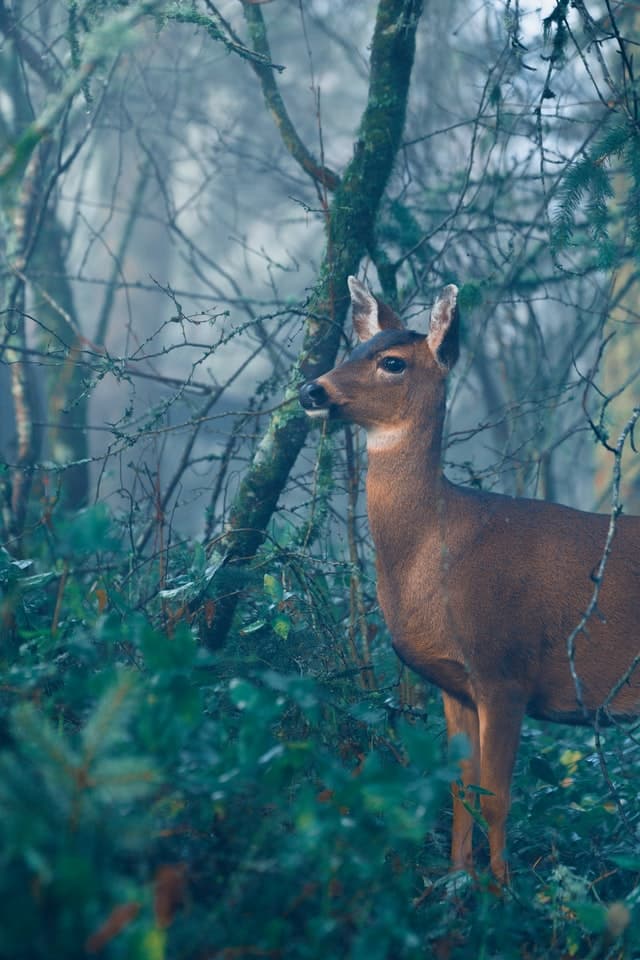
As we’ve discussed in this article, deer behavior patterns change during the course of the year.
Recognizing the animal’s habits and patterns of behavior is important to understanding any species of deer, whether you need to avoid deer collisions as a driver, or you’re a hunter hoping to encounter wild deer.
Thinking that deer are nocturnal because they’re so often seen near roads in the evening is logical, however, deer are primarily crepuscular and the majority of deer are not nocturnal.

